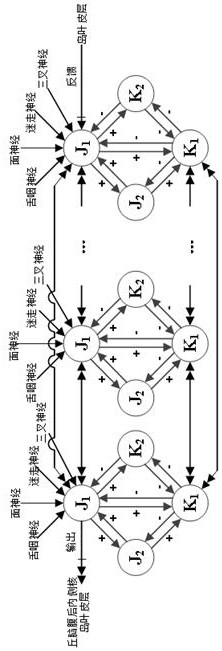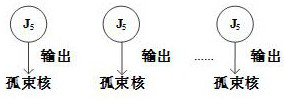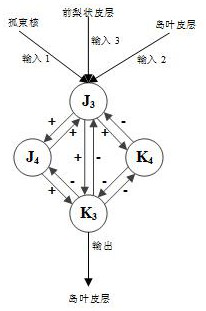Flavor identification method based on smell-taste associated perception model
A technology of perception model and recognition method, applied in the direction of biological neural network model, food test, complex mathematical operation, etc., can solve the research of perception ability without smell-taste synaesthesia transmission mechanism, without considering the phenomenon of mixed sense of smell and taste, Unable to achieve high bionics and other issues
- Summary
- Abstract
- Description
- Claims
- Application Information
AI Technical Summary
Problems solved by technology
Method used
Image
Examples
Embodiment Construction
[0095] In order to make the object, technical solution and advantages of the present invention clearer, the present invention will be further described in detail below in conjunction with the accompanying drawings and embodiments. It should be understood that the specific embodiments described here are only used to explain the present invention, not to limit the present invention.
[0096] refer to Figure 1 to Figure 12 , a flavor recognition method based on the smell-taste synesthesia perception model, comprising the following steps:
[0097] S1: Establish a description model of the topological structure and dynamic characteristics of the solitary tract nucleus module in the smell-taste synesthesia perception model;
[0098] S2: Establish a description model of the topological structure and dynamic characteristics of the ventroposteromedial nucleus module in the smell-taste synaesthesia perception model;
[0099]S3: Establish a description model of the topological structur...
PUM
 Login to View More
Login to View More Abstract
Description
Claims
Application Information
 Login to View More
Login to View More - R&D
- Intellectual Property
- Life Sciences
- Materials
- Tech Scout
- Unparalleled Data Quality
- Higher Quality Content
- 60% Fewer Hallucinations
Browse by: Latest US Patents, China's latest patents, Technical Efficacy Thesaurus, Application Domain, Technology Topic, Popular Technical Reports.
© 2025 PatSnap. All rights reserved.Legal|Privacy policy|Modern Slavery Act Transparency Statement|Sitemap|About US| Contact US: help@patsnap.com



